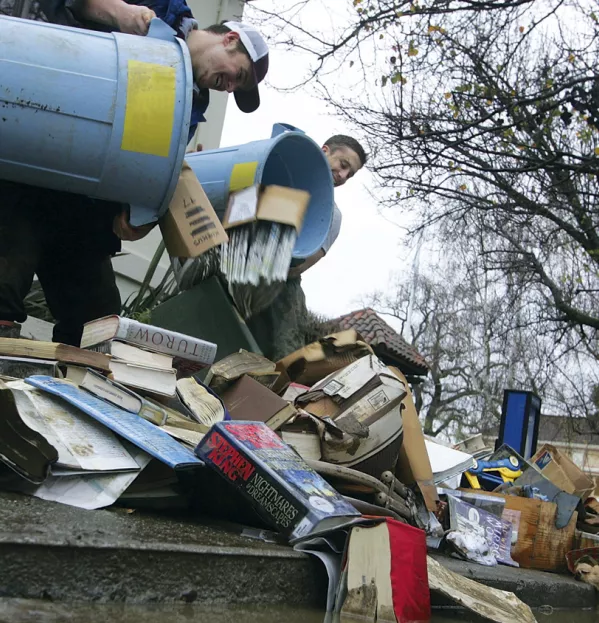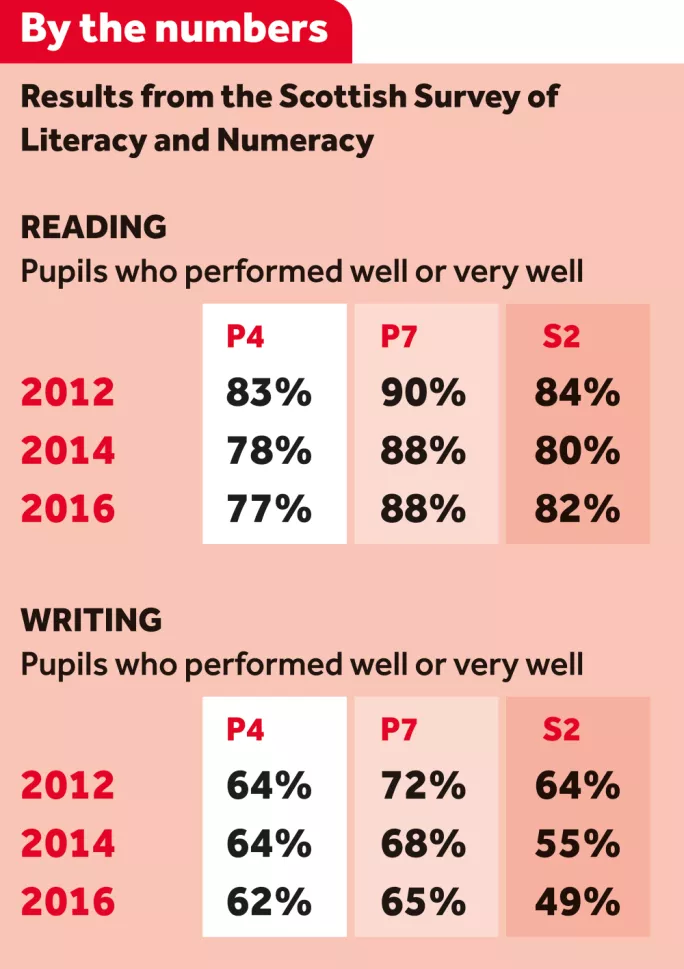SSLN departs, but the issues its results raise still remain

“If you can’t say it, you can’t read it,” says Lorna Stewart, the headteacher of Craigroyston Primary in Edinburgh.
Last year, assessments uncovered that half of the P1 children joining the school had oral language skills more typically observed in children aged between 3 and 4.
“They were roughly two years behind where they should have been,” says Stewart, whose pupils come mainly from Muirhouse, one of the most deprived areas in Scotland.
Now, using money from the Scottish government aimed at improving the attainment of disadvantaged pupils, the school is investing in a speech and language therapist in a bid to improve the children’s language and communication skills (see box, below).
The education secretary, John Swinney, has come to see the work the school is doing in nursery and early primary. He joins a small group of P1s working on ways to improve their vocabulary and listening skills. He tells them he has a son who is 6, and reveals that his favourite children’s story is The Gruffalo.
It feels like a happy occasion, but Swinney is here to launch the results of the latest (and last) Scottish Survey of Literacy and Numeracy (SSLN) - which are, he admits, “simply not good enough”.
Given the emphasis Curriculum for Excellence (CfE) places on literacy, the government would have hoped to see improvement. But the results are either holding steady or falling.

They make for particularly depressing reading in S2: back in 2012, 64 per cent of pupils were performing well or very well at writing, but last year that figure dropped to 49 per cent.
Literacy expert Sue Ellis, a professor of education at the University of Strathclyde, blames a lack of clear guidance and direction for teachers about how literacy should be taught. Cuts to the numbers of centrally employed local authority staff who can give schools advice and support have not helped, she adds.
“What Scotland needs are teachers who are skilled enough to make the professional judgements about what will meet the needs of the kids sitting in front of them,” says Ellis.
‘Neglect’ of subject knowledge
A 2014 Audit Scotland schools report confirmed that the main way in which councils were saving money was by cutting staff.
Quality improvement officers, whose job it is to support schools in areas like improving literacy, have been among the hardest hit; government figures show that their numbers have dropped by more than a third in just under a decade, from 528 in 2007 to 352 last year.
EIS general secretary Larry Flanagan points out that the S2 pupils are effectively being assessed a year early, as the CfE level their results are marked against is the level they are supposed to achieve by the end of S3.
Of course, back in 2012, S2 pupils did better even though they were being assessed at the same stage.

Lindsay Paterson, professor of education policy at the University of Edinburgh, points to CfE’s “neglect” of subject-specific knowledge as an explanation for the SSLN’s disappointing results.
He adds: “What that rich, knowledge-based curriculum needs is an agreed, common set of syllabuses which specify subject content as the means by which pupils will learn skills. CfE neglects all that.”
The range of courses on offer in the early years of secondary is another area that has been neglected under CfE, say the experts. The new qualifications were introduced from 2014, and since then the focus has been on the senior secondary phase instead of pupils’ broader general education from S1 to S3.
Teachers fought for the removal of unit assessments but the downside, they say, is that the focus will remain on the senior phase during the transition period. The neglect of S1-3 was highlighted last month, on the day Education Scotland published its analysis of four years’ worth of inspections. Chief inspector Bill Maxwell told Tes Scotland that “many schools underestimated both the scope and the need to change their first three years”.
He said: “In some cases, schools have ended up with a broad general education that isn’t sufficiently challenging.”
The recent influx of cash into the system to improve the attainment of disadvantaged pupils is also aimed at improving levels of literacy and numeracy.
Any improvement will not be apparent in any future SSLN results. Last year, Tes Scotland revealed the survey - which costs around £800,000 a year - would be scrapped by the Scottish government after 2017.
The justification is that the new teacher judgements, based on the literacy and numeracy standardised assessments due to be introduced next year, will make the survey obsolete. However, many education experts argue the two should have continued to run in parallel.
The case for reform
Ellis is keen to point out that the SSLN has failings. It is a sample survey - 10,100 pupils and 4,600 teachers in the 2,250 schools took part last year, and the numbers are not large enough to tell us anything about how individual local authorities are doing.
Others argue it should be retained to prevent an information vacuum; it will take years for trends in the new data to become apparent. The SSLN, they say, would also provide “a touchstone” to show whether improvement in standardised testing results is genuine - or if teachers are just getting better at rehearsing their pupils for the tests.
Swinney tells Tes Scotland that standardised testing will provide “a more comprehensive, robust and reliable way of ensuring that we improve performance”.
Speaking in the library at Craigroyston, he says: “What standardised assessment or teacher judgement does is it gives the ability to look at each individual child and make sure we are supporting their needs. And that’s the only way you will advance - by supporting individual children to fulfil their potential.”
The new benchmarks for literacy will bring “clarity over standards”, with standardised assessments helping schools and teachers to track individual children, he says.
Swinney also claims the poor SSLN results are further proof that more education reform “is now imperative”. In June, he will be making an announcement in Parliament about the outcome of the government’s review of how schools are run, he says.
The Scottish government has said it wants to give headteachers more power so that “more decisions about children’s learning and school life are taken within schools themselves”.
Back at Craigroyston, Stewart, who has been a headteacher for 26 years, is emphatic: she doesn’t want any more power. What is making the difference to her ability to affect change in her school is money, she says.
Her views echo the submission from the primary headteachers’ association, AHDS, to the governance review.
Secondary headteachers, though, are supportive of greater freedoms - and there are increasing signals that they are the group destined to win the day.
You need a Tes subscription to read this article
Subscribe now to read this article and get other subscriber-only content:
- Unlimited access to all Tes magazine content
- Exclusive subscriber-only stories
- Award-winning email newsletters
Already a subscriber? Log in
You need a subscription to read this article
Subscribe now to read this article and get other subscriber-only content, including:
- Unlimited access to all Tes magazine content
- Exclusive subscriber-only stories
- Award-winning email newsletters